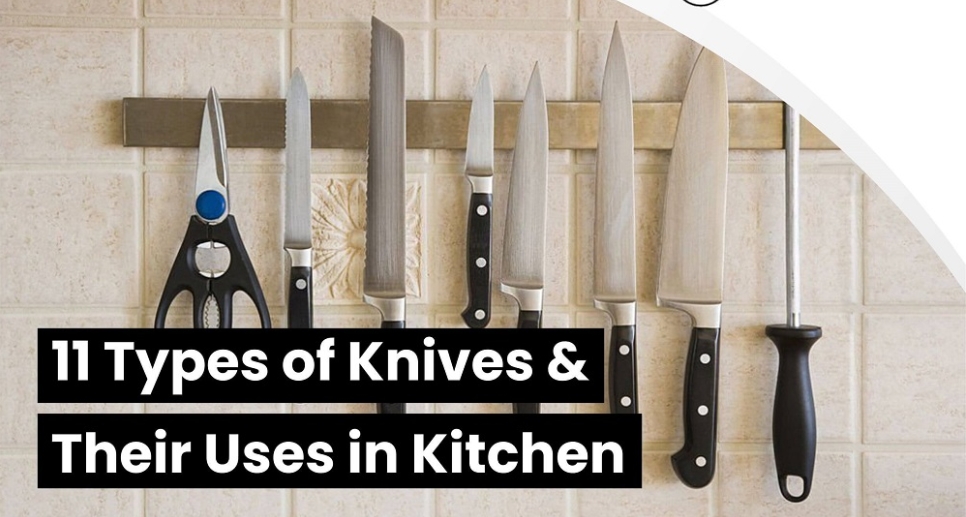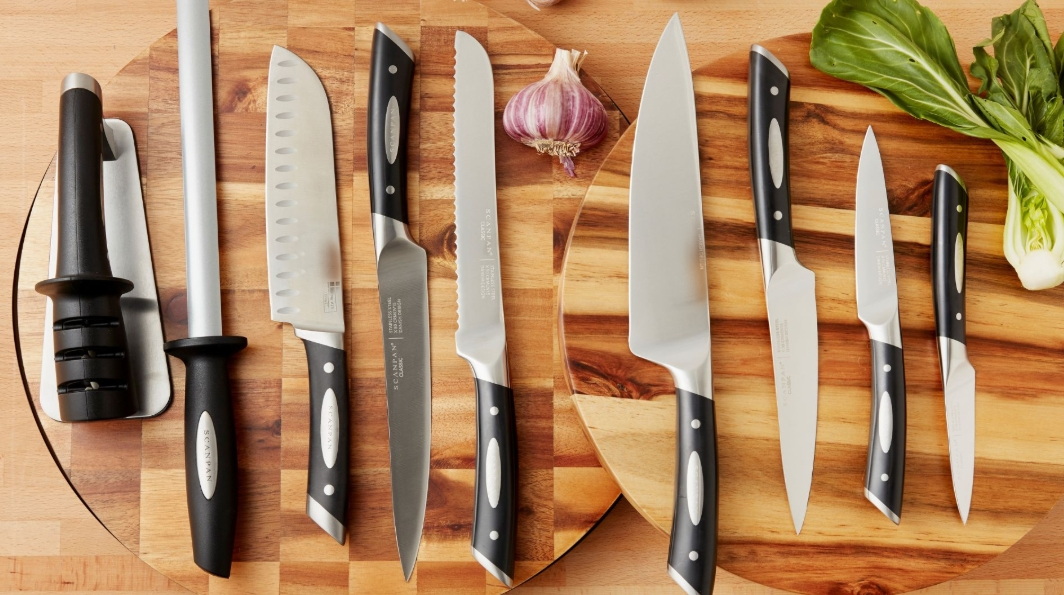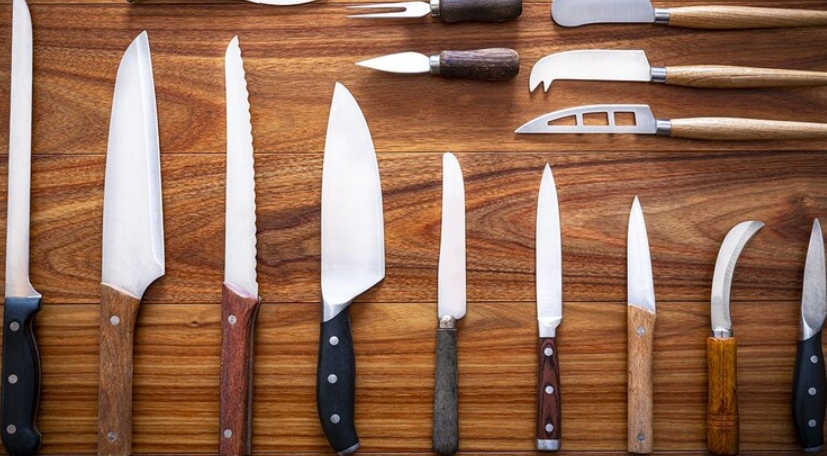

Views: 222 Author: Ella Publish Time: 2025-05-03 Origin: Site








Content Menu
● Why the Right Number of Knives Matters
● Essential Knives for Every Kitchen
>> 2. Bread Knife (Serrated Knife)
● Optional Knives to Consider Adding
>> Boning Knife
>> Steak Knives
● How to Choose the Best Knife Set for You
>> Consider Your Cooking Style
>> Budget
● Building Your Knife Collection Gradually
● Frequently Asked Questions (FAQ)
>> 1. How many knives should a beginner have?
>> 2. Is a Santoku knife necessary?
>> 3. What's the difference between a utility knife and a chef's knife?
>> 4. Should I buy a knife set or individual knives?
>> 5. How do I maintain my knives?
Choosing the right number of knives for your kitchen can be overwhelming. Knife sets come in various sizes and compositions, from minimalist four-piece sets to extensive collections with a dozen or more knives. But how many knives do you truly need to cook efficiently and safely? This article explores the essential knives every home cook should have, the benefits of different types of knife sets, and tips for building a collection that suits your cooking style.

Having too few knives can limit your ability to prepare certain foods properly, while too many knives can clutter your kitchen and complicate maintenance. The goal is to find a balance that offers versatility without unnecessary redundancy. A well-chosen knife set improves your workflow, enhances safety, and elevates your cooking experience.
When you have the right knives, you can cut ingredients more precisely, which affects cooking times and the final presentation of your dishes. For example, slicing vegetables thinly and evenly allows them to cook uniformly, enhancing flavor and texture. On the other hand, using the wrong knife for a task can be frustrating and even dangerous, increasing the risk of slips and injuries.
Most experts agree that a basic, functional kitchen knife set consists of about four knives. These cover the majority of cutting tasks you'll encounter in everyday cooking.
The chef's knife is the cornerstone of any knife set. With its broad, triangular blade and gently curved edge, it allows for a rocking motion that makes chopping, slicing, and dicing efficient and comfortable. It can handle vegetables, herbs, meats, and poultry, making it the most frequently used knife in the kitchen.
A good chef's knife typically ranges from 8 to 10 inches in length, providing enough blade to tackle large ingredients like melons or roasts, while still being manageable for smaller tasks. Investing in a high-quality chef's knife can transform your cooking experience, as it offers balance, sharpness, and durability.
A bread knife features a serrated edge designed to cut through crusty bread without crushing it. It is also excellent for slicing tomatoes, citrus fruits, and other foods with tough exteriors and soft interiors.
The serrations grip the surface of the bread or fruit, allowing you to saw through without applying excessive pressure. This prevents squashing and preserves the texture and appearance of delicate foods. Bread knives usually have blades around 8 to 10 inches long, with a scalloped or wavy edge.
Small but precise, the paring knife excels at delicate tasks such as peeling, trimming, deveining shrimp, and making intricate garnishes. Its short blade and pointed tip provide excellent control for fine detail work.
Typically 3 to 4 inches in length, the paring knife is perfect for tasks that require precision and maneuverability. It is ideal for working with small fruits and vegetables, as well as for removing seeds or cutting small pieces of meat.
The utility knife is a versatile mid-sized blade that fills the gap between the chef's knife and the paring knife. It's perfect for slicing sandwiches, cutting small fruits and vegetables, and other general kitchen tasks.
Utility knives usually measure between 5 and 7 inches and are handy when a chef's knife feels too large and a paring knife too small. They are often overlooked but can be a great addition to your kitchen arsenal.

Once you have the basics, you might consider expanding your collection based on your cooking habits and preferences.
Originating from Japan, the Santoku is a multi-purpose knife with a flat edge and a wide blade, often featuring grantons (small indentations) to prevent food from sticking. It excels at slicing, dicing, and mincing, especially vegetables, fish, and meats.
The Santoku is typically shorter than a chef's knife, around 7 inches, and has a straighter edge that limits rocking but allows for precise chopping with a downward motion. Its name translates to “three virtues,” referring to its ability to handle slicing, dicing, and mincing tasks efficiently.
Designed for slicing cooked meats, the carving knife has a long, thin blade that allows for precise, thin cuts, ideal for roasts and poultry.
Carving knives usually measure 8 to 15 inches, with a narrow blade that reduces resistance when slicing. This knife is perfect for holiday meals or any occasion where you want to present beautifully sliced meat.
With a narrow, flexible blade, the boning knife is specialized for removing bones from meat, poultry, and fish.
The flexibility of the blade allows it to maneuver around bones and joints with precision, minimizing waste. Boning knives are typically 5 to 6 inches long and have a sharp, pointed tip.
These are typically serrated knives used at the table for cutting cooked meats. Some knife sets include a matching set of steak knives for serving.
Steak knives usually have blades around 4 to 5 inches long and are designed for ease of use by diners. They are not used for food preparation but are an important part of a complete knife set for many households.
Knife sets vary widely in the number of knives included and their intended use.
- Basic Knife Set: Usually includes the chef's knife, paring knife, bread knife, and utility knife. This set is perfect for beginners or those with limited kitchen space. It covers most cooking needs without overwhelming the user.
- Full Knife Set: Contains additional knives such as Santoku, carving, boning knives, honing rods, and kitchen shears. This set is ideal for experienced cooks who want specialized tools for different tasks.
- Steak Knife Set: Often comes with a full set of kitchen knives plus multiple steak knives for dining. This is great for households that frequently serve meat and want matching knives for both preparation and table use.
- Casual cooks need fewer knives, focusing on essentials that cover most tasks.
- Enthusiasts and professionals benefit from a wider variety for specialized tasks, such as filleting fish or carving roasts.
- Bakers might prioritize bread and paring knives.
- Vegetarian cooks may find Santoku and chef's knives more useful for vegetable prep.
Proper storage protects your knives and keeps your kitchen organized. Knife blocks are popular for their convenience and safety, but they take up counter space. Magnetic strips save space and display knives attractively but require careful installation to avoid blade damage. Drawer inserts keep knives secure but may limit accessibility.
Maintenance is crucial. Regular honing realigns the blade edge, keeping knives sharp between sharpenings. Professional sharpening restores the blade's cutting edge, which dulls over time. Avoid putting knives in the dishwasher, as harsh detergents and heat can damage blades and handles.
Knife sets range from affordable to premium prices. While budget sets may be tempting, investing in quality knives pays off with longevity and performance. Look for knives made from high-carbon stainless steel with full tangs (the metal running through the handle) for durability and balance.
If you're starting fresh or on a budget, begin with a high-quality chef's knife and paring knife. These two will cover most tasks. Add a bread knife next, then expand with specialty knives as needed. This approach prevents unnecessary spending and clutter.
Buying individual knives allows you to prioritize quality over quantity. It also lets you select knives that fit your hand comfortably, which is essential for safety and efficiency.
You don't need dozens of knives to cook well. A thoughtfully curated set of four to six knives covers nearly all kitchen tasks efficiently. Start with a chef's knife, paring knife, bread knife, and utility knife. Expand based on your cooking style and preferences. Prioritize quality over quantity to ensure your knives stay sharp, safe, and enjoyable to use. This balanced approach saves space, money, and effort, making your cooking experience more enjoyable and productive.
Remember, the best knives are those that feel comfortable in your hand and suit the way you cook. Building your collection gradually allows you to learn your preferences and invest wisely.

A beginner should have about four knives: a chef's knife, bread knife, paring knife, and utility knife. This set covers most cooking tasks without overwhelming the kitchen space.
A Santoku knife is not essential but is a great addition for those who want a versatile, easy-to-handle knife especially good for slicing and dicing vegetables.
A utility knife is smaller and more precise, ideal for medium tasks like slicing sandwiches or small fruits, while a chef's knife is larger and designed for heavy-duty chopping and slicing.
Buying a set is convenient and often more affordable. However, purchasing individual knives allows you to choose higher quality pieces tailored to your needs.
Regular honing keeps the edge aligned, while professional sharpening restores sharpness. Always hand wash knives and store them properly to prolong their life.